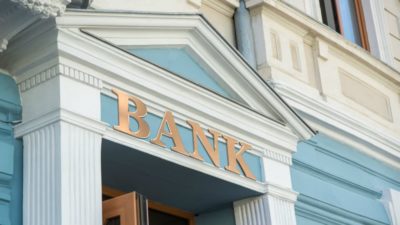Toronto-Dominion Bank (TSX:TD)(NYSE:TD) has recently announced yet another increase to its borrowing rates, increasing its advertised mortgage rate for the second time in the past two months as banks attempt to shore up long-term lending rates because short-term bond yields have started to climb.
As bond yields in Canada and the U.S. continue to climb, the profitability of large banks in Canada has been impacted. Rising bond yields mean rising costs for banks, holding mortgage yields constant; this means diminishing margins for banks. Given the competitive landscape of financials in Canada, banks may have less latitude to raise mortgage rates quickly to keep pace with rising costs than borrowers think (many of these costs are absorbed in the short term).
These two minor rate increases may be the first of a number of increases to come. Let’s look at why TD and other banks are now deciding to raise rates, even though the Bank of Canada has kept its target rate steady at 0.5%.
Why has TD raised mortgage rates twice so quickly?
In early November, TD raised its advertised special mortgage rate 15 basis points (bps) due to some of the legislative changes the government of Canada put in place as well as the fact that the bank’s cost of borrowing had increased.
The cost of borrowing for Canadian banks is impacted by a number of factors, among which are short-term government bond yields. As the yields on Canadian and U.S. bond yields begin to rise, a bank is forced to raise rates to keep pace with the rising “risk-free rate,” which is generally viewed as short-term government bond yields.
The theory is that as the risk-free rate increases, banks must achieve a high enough yield from lending to justify the risk of the mortgage. If five-year government bond yields were at 5%, for example, the bank could not lend out mortgages with five-year terms at less than 5% as the bank would be able to earn this return, risk free, by buying a government bond.
The risk premium (yield over and above the risk-free rate) typically stays constant (or within a reasonable band), so when government bond rates increase, consumer mortgages tend to increase in lockstep.
Will TD be able to keep pace with rapidly rising yields in the future?
This trend toward government bond yields increasing may be just starting. Sharp, rapid rises in government bond yields are uncommon; the most recent tick upward in short-term government bond yields can be directly attributable to the recent Trump election win. If bond yields continue to rise over the short to medium term, however, we may see larger or more frequent rate increases from TD as the bank scrambles to cover its rising borrowing costs.
The most recent 10 bps increase to the bank’s advertised mortgage rates will only affect variable-rate mortgages and variable credit facilities; locked-in mortgages will continue at the given rate until the term ends (in Canada, typically five years). The potential for a consumer mortgage to have a lower interest rate than the risk-free rate is theoretically possible; such an unlikely scenario would seriously harm banks in the short term.
This is a very interesting time indeed–let’s see what happens.








